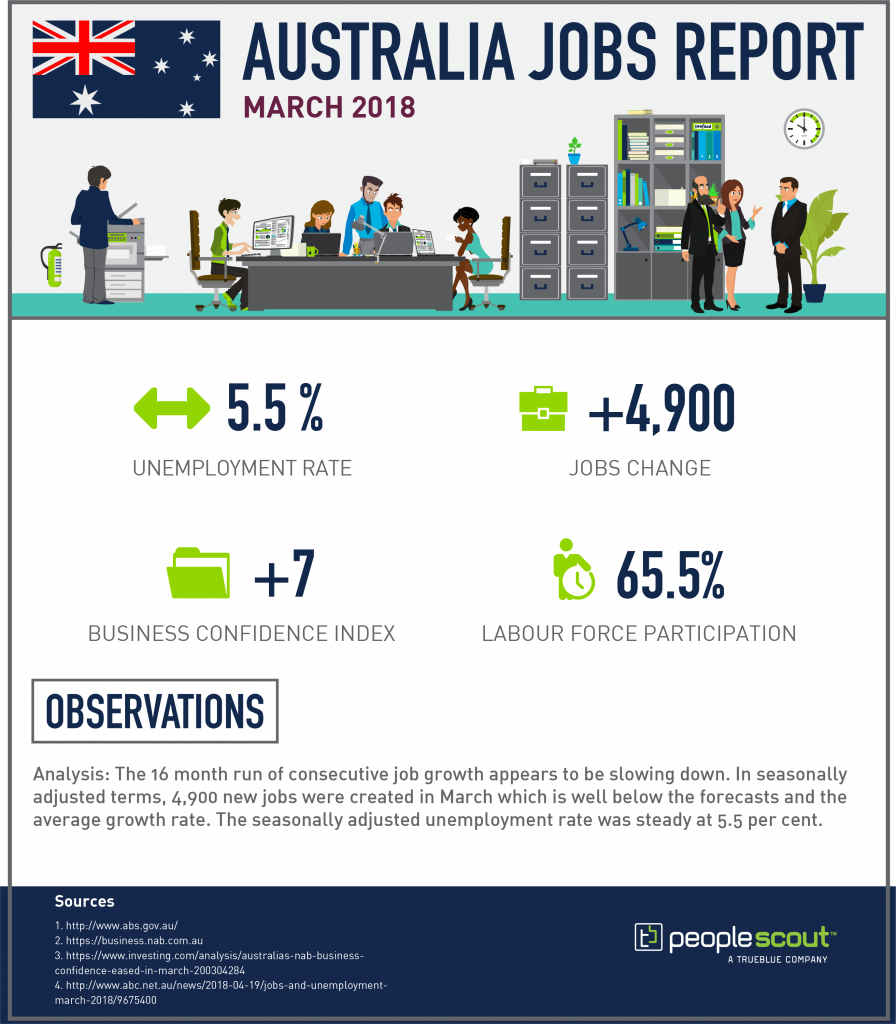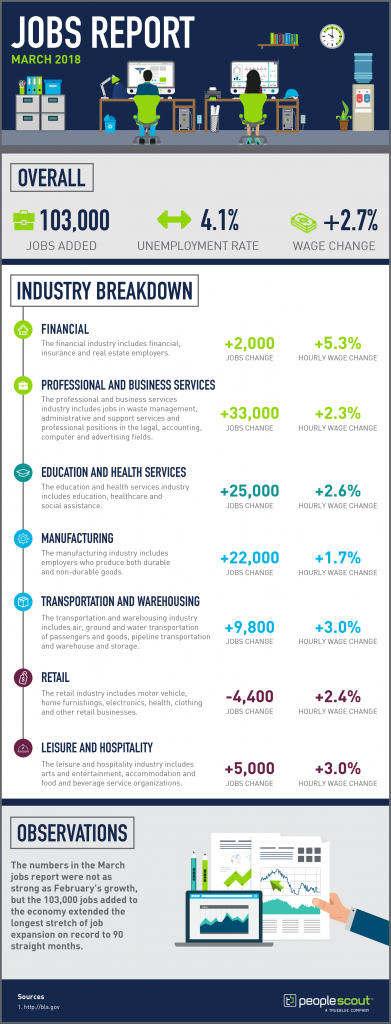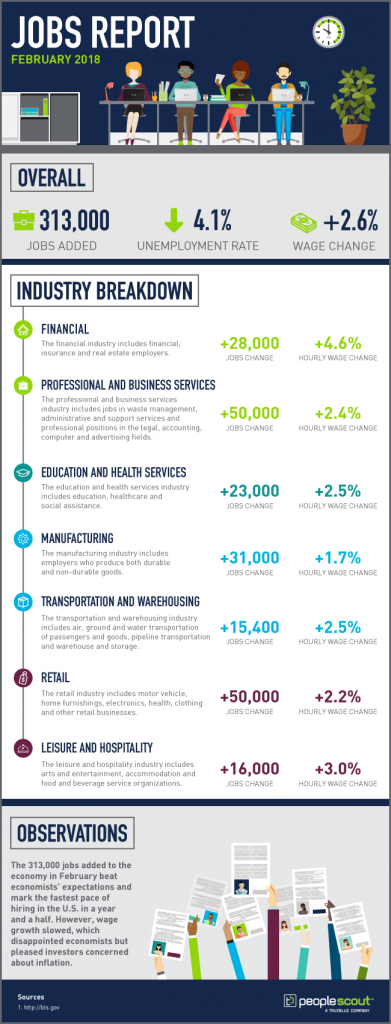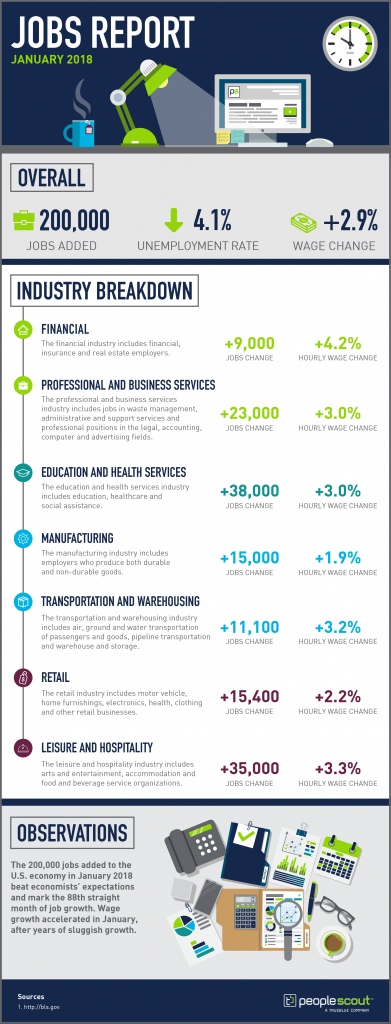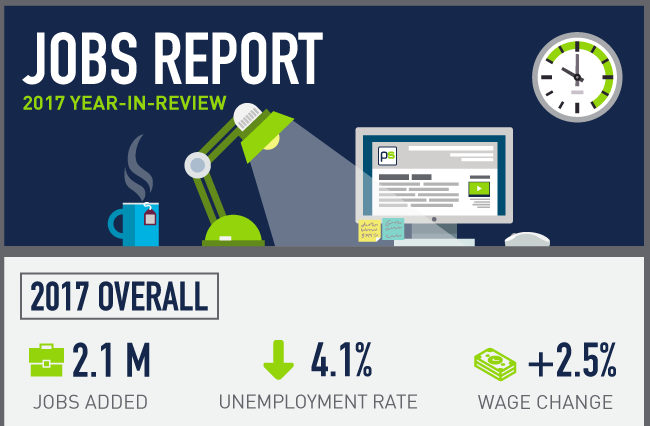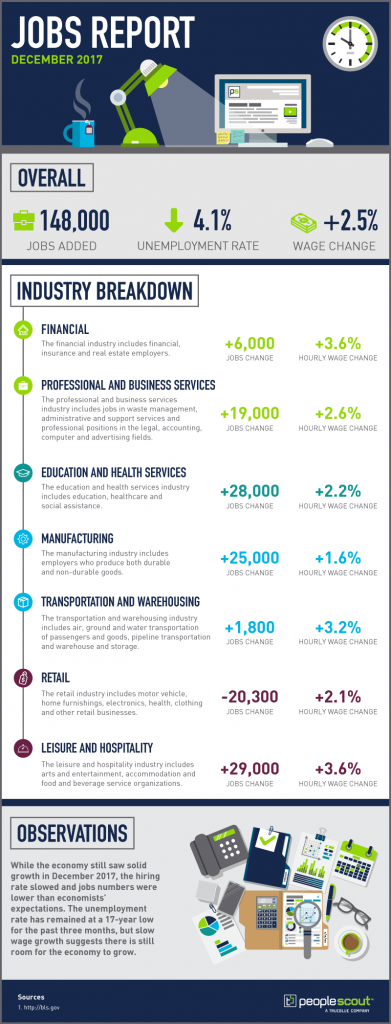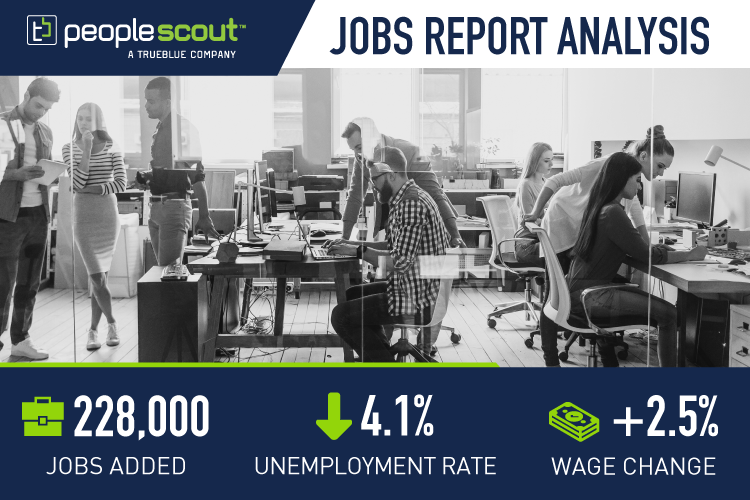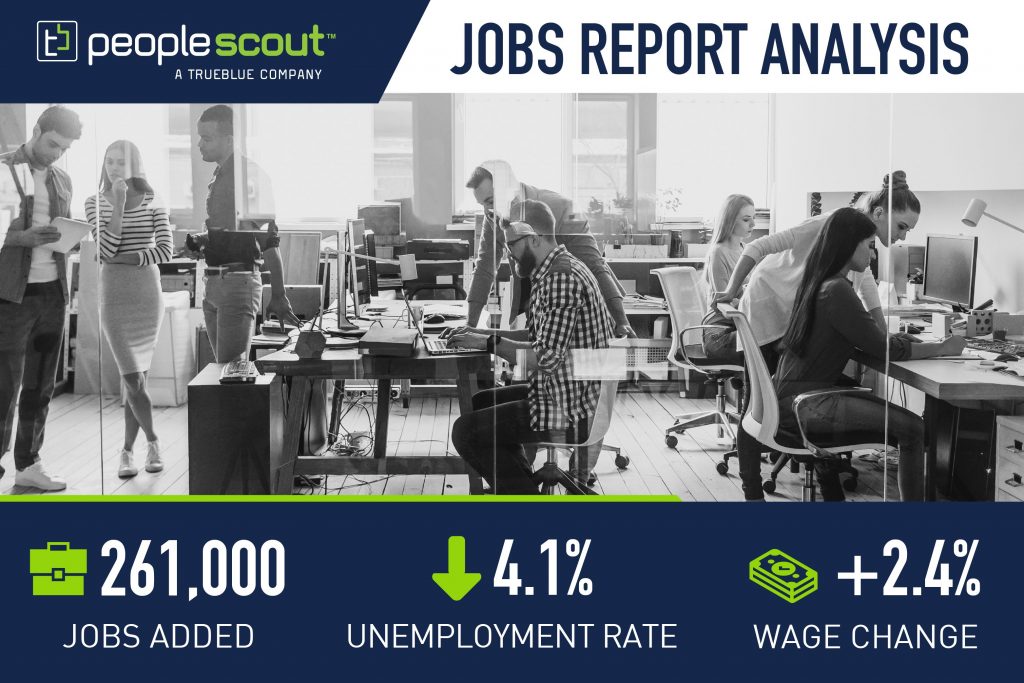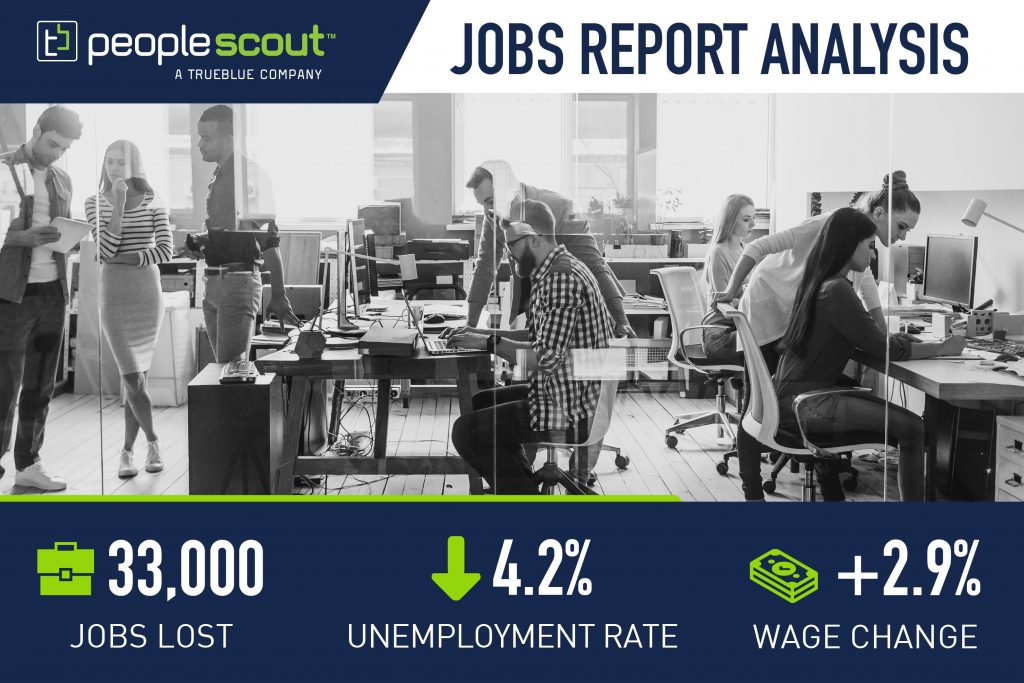The Labor Department released its April jobs report with 164,000 jobs added to the U.S. economy, continuing the longest stretch of job growth in the nation’s history and bringing the unemployment rate to 3.9 percent – the lowest level since 1970.
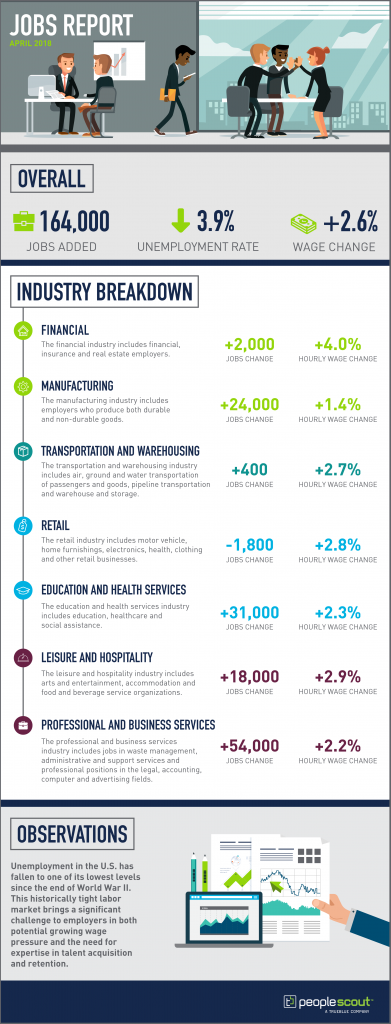
The Numbers
164,000: The economy added 164,000 jobs in April.
3.9%: The unemployment rate dropped to 3.9 percent.
2.6%: Wages increased 2.6 percent over the last year.
The Good
The 164,000 jobs added this month may have been less than some analysts projected, according to the Wall Street Journal, but April’s job growth brought the unemployment rate down to 3.9 percent after it held steady for six months. Revised figures show employers added 30,000 more jobs in February and March than previously estimated, bringing the monthly pace of hiring this year to 200,000, compared to the 2017 average of 182,000 jobs per month.
The strongest gains continue to be in the professional and business services sector, which added 54,000 jobs in April. With that, the total number of jobs added in this sector in the last year rose to more than half of a million. Manufacturing also continued to grow with 245,000 jobs added in the last year. The healthcare industry also continued its consistent growth, adding 24,000 jobs in April, and 305,000 in the last year.
Wage growth continued, but at a modest rate of 2.6 percent over last year. While many workers would like to see higher gains, the modest growth is appealing to investors and eases fears about the economy overheating.
The Bad
Unlike the areas of the economy which showed healthy job increases in April, some industries saw little change over the last month – including construction, wholesale trade, retail trade, transportation and warehousing, information, financial activities, leisure and hospitality and government work.
The U.S. workforce shed 410,000 people in April, bringing the total of those out of the workforce to 95.7 million. The tightening labor market brings significant challenges to employers, including potential wage pressure and a diminishing pool of available talent, according to the Washington Post.
The Unknown
Uncertainty over the imposition of tariffs on China and other countries makes long-term planning and growth projections very challenging, the New York Times reports. The possible shift in the price of raw materials resulting from a trade war would likely have the greatest impact on the manufacturing sector.
